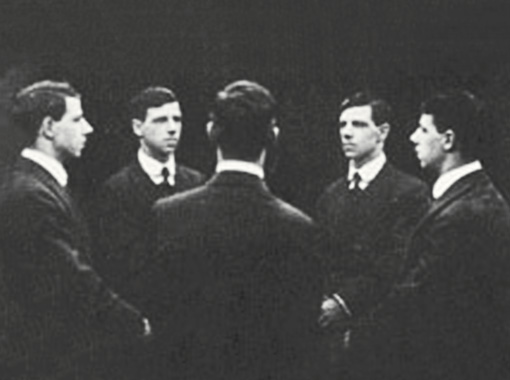Mirrors limit all fantastical reproductions through the cool predictability of their optical reflections, yet like these, mirror images are also untenable. On the basis of the Platonic critique of mimesis, reflection can be regarded as one of the processes aimed at the ›dangerous art of imitation‹, namely the creation of images that in no way resemble the things they seek to portray. Although mirror images appear to be an exact depiction of what is in front of the mercury-coated glass, everything in the mirror is inverted – and along with the person in front of the mirror, his modified image also vanishes. Everything happens and nothing is recorded in these rooms of the looking glass, where, magicked into rabbis, we now read the books from right to left. Suspicious of the disparate nature of reflected images, we reassure ourselves that we are ›really‹ present in front of the mirror – in the ›true-sided‹ physical constant – and perceive the familiar things around us as ›actually‹ existent.
When, as the result of a cinematographic vision at the beginning of the twentieth century, it came about that the mirror no longer represented the rigid boundary dividing space into a background realm of the imagination and a foreground one of reality, but instead was permetable to a moment of transgression,** it suddenly became conceivable that at this glazed interface, the virtual and the material could enter into a reciprocal relationship: image and object could change places. As a game involving analogous factors, this form of exchange is an attempt to alternately give firmness to the unstable and to transport the compact back into the cosmos of images.
** Nach Following the first passage through a mirror in cinematic history (Jean Cocteau Le sang d’un poète 1930) and variations on this theme in more recent film productions, where the metaphor of the mirror kept the border between real and virtual space open (Andy & Larry Wachowski The Matrix 1999), as a ›film-within-a-film‹, the cinema screen itself – the white surface as a matte backdrop for projections and pretences – became the virginal membrane which served as the gateway for the film-based images to enter the real world, and through which a great deal of traffic was soon passing in both directions (Woody Allen The Purple Rose of Cairo 1985 / John McTiernan Last Action Hero 1993). Then, as a ›film-within-a-film-within-a-film‹, the idea of passing through multiple levels also became conceivable, the erratic order of which was modelled on the multilayered depths of dream spaces. (Christopher Nolan Inception 2010). In the visual arts, too, there may be a loose thematic equivalent to this two-way traffic and the complex surrounding the concretization of media-based elements: after Cubism in the early twentieth century had incorporated fragmented items of reality into collaged images and thereby debased their status (Georges Braque Bottle, Newspaper, Pipe and Glass 1913), and decades later, in Art Informel, the slashed canvas had gained validity and presented itself as a permeable spatial segment (Lucio Fontana Concetto spaziale 1959), it was only logical that pictures suddenly began to take on a more substantial appearance: they swelled up into bodies of colour and canvas (Gotthard Graubner Via lactae 1960/61 / Enrico Castellani Superficie angolare rossa 1960), detached themselves from the wall and began to occupy ›real‹ space – first as ›objects‹ and later in the reduced form of ›specific objects‹ (Donald Judd Specific Objects 1965).
|
|
 |
|